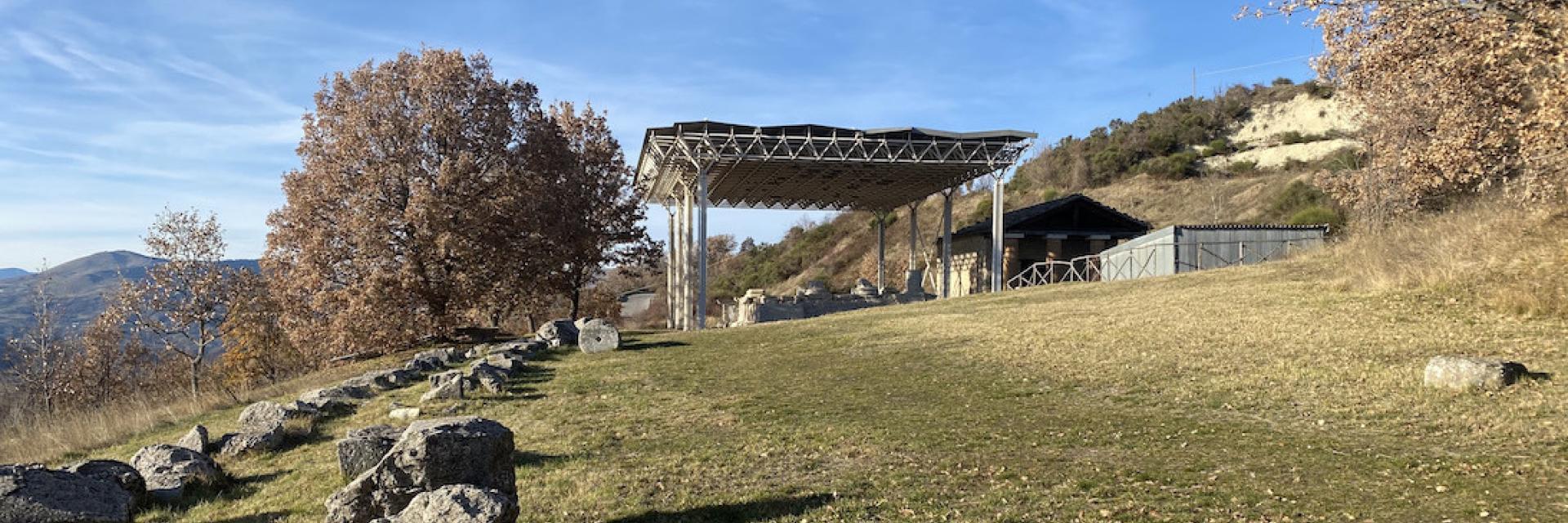Schiavi d’Abruzzo
Schiavi d'Abruzzo is a picturesque fortified medieval village situated in a privileged position among the mountains in the southernmost part of the province of Chieti, on the border with Molise. Schiavi d'Abruzzo is divided into nine districts composed of rural houses, while the heart of the village is located on the top of a hill at 1,172 meters above sea level.
The historic center dates back to around the 15th century and is characterized by houses with sloping walls—fortified houses—often adorned with arches and passageways; these structures are mostly made of limestone, typical of fortified villages.
In this land steeped in history, where the boundaries between myth and reality merge, lie the traces of an ancient proud and brave people: the Pentri, one of the four tribes of the Samnites. The traces of their footsteps are still visible today thanks to the discovery of protohistoric settlements, the so-called Italic Temples, which stand as silent witnesses of a distant era in the hamlet of Taverna in the locality of Torre.
The current medieval core seems to have originated from a colony of Slavs who emigrated from Dalmatia. The name first appears in historical documents from the year 922, preserved in the Monastery of Monte Cassino. In particular, it refers to a donation made by Count Berardo Borrello of San Eustachio of Pietrabbondante, in which reference is made to properties held in the territory of Sclavi. The history of the village was defined in the 12th century during the Norman era when Roberto da Sclavo, Count of Caiazzo, arrived in these lands and founded the castle, which was named Schiavi in his honor. Over the centuries, the village experienced various dominations, first becoming part of the illustrious Abbey of San Giovanni in Venere and later passing into the hands of noble families, with the last to leave their mark being the Caracciolo, princes of Santo Buono.
The name of the village underwent a significant modification with the addition of the term "Abruzzo" only after the Unification of Italy with Royal Decree No. 1140 of January 22, 1863.
Points of Interest
The Church of San Maurizio, located in the old town, has its roots in the medieval era and has undergone significant restorations. Among its artistic treasures is the wooden choir loft created by Francesco d'Onofrio, a testament to the craftsmanship of the time.
The Archaeological Area known as the Sacred Area of the Italic Temples is a true historical treasure of the Monti Frentani. Here, there are two cult buildings of considerable importance: the main temple, dating back to the early 2nd century BC, and a second smaller building added in the early 1st century BC.
For those who wish to immerse themselves in the past in an engaging way, it is possible to visit the Archaeological Museum by reservation, which offers a synthesis of the findings and studies related to the Sacred Area of the Italic Temples. Another window into the past is the Museum of Rural Traditions, where, among ancient agricultural tools and handcrafted works, the world of the farmers and shepherds of yesteryear has been recreated, evidenced by numerous historical documents and photographs.
Schiavi d'Abruzzo is not only a place of historical interest but also a corner where rich cultural heritage is kept alive, inviting visitors to discover and appreciate the traditions and history that have shaped this charming community.
Fuente: https://visitmontifrentani.it/luoghi/schiavi-dabruzzo-22020

